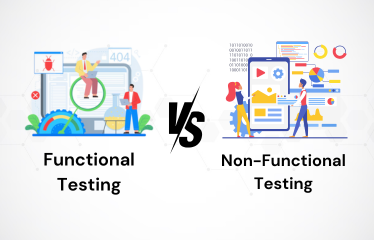A Comprehensive Foundation with Production-Ready Features
GetX for State Management and Navigation
The kit leverages GetX, one of the most lightweight and powerful Flutter state management libraries. It supports reactive programming, enabling efficient UI updates in response to data changes without unnecessary boilerplate. Additionally, GetX handles routing and dependency injection, allowing for a simplified yet robust approach to navigation and service management.
Built-in Dependency Injection
By using GetX’s dependency management or abstracted service locators, the kit ensures that all modules remain decoupled. This enables seamless testing and improves code readability. Services and repositories are registered centrally, reducing coupling and avoiding tight interdependencies between features.
Network Connectivity Monitoring
The Network Checker utility continuously monitors the device’s connection status. This allows developers to gracefully handle offline/online states, display fallback UIs, and prevent unnecessary API failures by conditionally controlling data fetching logic.
Dio Setup with Interceptors
The kit includes a fully configured Dio instance, integrated with request/response interceptors, global error handling, and automatic token injection. This design standardizes how network calls are made across the application, reduces redundant code, and ensures consistent response handling.
Notifications: Local and Push
-
Local notifications are handled through platform-specific integrations, enabling alert-style reminders, updates, or in-app alerts.
-
Push notifications are configured with OneSignal, supporting rich notifications and advanced user segmentation. This integration supports deep linking and contextual triggers as well.
Firebase Crashlytics and Analytics
Firebase Crashlytics is configured to capture uncaught exceptions and crash reports, including custom logs and handled exceptions. This is critical for diagnosing issues post-release. Firebase Analytics, meanwhile, tracks user behavior and app usage patterns to inform product decisions.
Flutter Flavors for Environment Separation
Using Flutter Flavors, developers can create multiple build environments (e.g., development, staging, production) with isolated configurations such as API URLs, keys, and logging levels. This promotes safe deployment practices and simplifies debugging across stages.
Background Task Management with WorkManager
Tasks such as scheduled sync, periodic updates, or delayed operations are offloaded to the background using WorkManager. This ensures reliability across platforms even when the app is terminated, complying with Android and iOS power management policies.
App Sharing and Version Control
Built-in utilities allow users to share content from the app using platform-specific sharing interfaces. Simultaneously, dynamic display of the current app version helps with user support and version-based feature management.
External Linking with URL Launcher
The URL launcher utility simplifies handling external links such as websites, social profiles, emails, or phone calls. It includes checks for link safety and platform compatibility.
Responsive UI via Flutter Screen Utils
The kit ensures device independence by including screen utility libraries that allow developers to define scalable UIs based on screen dimensions, pixel densities, and orientations. This approach promotes a consistent design system across all form factors.
Theming Support (Light and Dark Modes)
The theming layer includes both light and dark theme support, enabling easy toggling and better accessibility. Themes are managed through centralized configuration, allowing developers to scale design tokens as the application grows.
Local Storage via GetStorage
GetStorage is integrated for lightweight, key-value-based local storage — ideal for saving user preferences, theme settings, or session data without requiring complex database setup.
HTML Viewer for Policy Compliance
The HTML Viewer allows rendering of static HTML content directly within the app — a requirement for displaying privacy policies and terms of service in compliance with app store regulations.
Shimmer UI for Loading States
Shimmer placeholders provide a better user experience by replacing blank screens during data fetching. The kit includes reusable shimmer widgets for both lists and full-screen loaders.
Internationalization Support
Localization support is built into the kit, allowing easy addition of multiple languages. Translation keys are managed centrally, ensuring content updates do not impact logic.
Modular Navigation and Route Guards
A scalable navigation structure is defined using GetX’s route management system, allowing for parameterized routing, route guards (e.g., login checks), and page lifecycle hooks.
Snackbar Extension
A global, theme-aligned snackbar system is included for displaying messages, validation prompts, and error notifications, reducing duplication and improving user consistency.
Splash Screen Integration
A clean, minimal splash screen is configured using native launch files and Dart, ensuring a professional entry point for the app while assets load in the background.
Custom Logger Utility
A structured logging system is included, configurable per environment, supporting tagged logs, colored output for dev mode, and secure logging practices for production.
Singleton Service Management
Singletons are implemented for services such as API client, Auth manager, and App configuration, using centralized access points. This ensures resource reuse and simplifies access across the app lifecycle.
Functional Programming with Dartz
The Dartz library introduces functional paradigms like Option, Either, and immutability principles. This results in safer code, predictable state flows, and improved error handling without resorting to exceptions.
Device Preview Support
Device Preview integration enables developers to test the app UI across a variety of devices, screen sizes, and orientations directly from the IDE.
WebView Integration
For apps requiring embedded web experiences — such as terms pages, user guides, or hybrid workflows — WebView support is included and isolated in its own module for flexibility.
Shorebird OTA Updates
Over-the-air updates are made possible with Shorebird, allowing patches and improvements to be pushed directly to users without resubmitting the app to stores. This reduces turnaround time for hotfixes and accelerates release cycles.
Architectural Principles and Development Best Practices
MVVM Architecture
The kit follows the Model-View-ViewModel (MVVM) architecture, separating business logic from UI. This makes the codebase more maintainable and testable and encourages clear ownership across modules.
Feature-Based Modularization
Every feature is encapsulated in its own module, containing routes, models, controllers, and views. This modular approach supports parallel development, easier onboarding, and faster debugging.
Reusable Custom Extensions
Common functionality (e.g., date formatters, validators, UI helpers) is abstracted into extensions, reducing redundancy and improving code clarity.
Integrated CI/CD Readiness
With Shorebird and structured build variants, the kit is CI/CD ready — suitable for integration with GitHub Actions, Bitrise, or custom pipelines.





























































